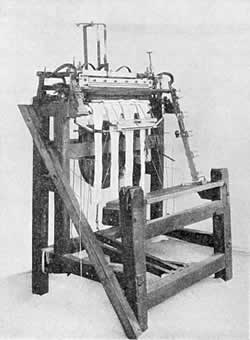
 |
Stocking frame. |
Structual
Standing Buildings
The best overall guides to industrial buildings and monuments is to be found in
- Marilyn Palmer & Peter Neaverson, Industrial Landscapes of the East Midlands (Phillimore, 1992).
- Ian Brown, Nottinghamshire's Industrial Heritage (Nottinghamshire County Council, 1989)
The preservation of industrial buildings has been a low priority for building conservation strategies within the county (and beyond). See however
- Morley, D.S. `The Industrial Archaeology of the City of Nottingham’, Nottingham Industrial Archaeology Society Journal, 11 (1986), 1-20
English Heritage is currently engaged in a systematic survey of the monuments all major industries, and this is highlighting the great rarity of much of the surviving buildings of now declining heavy industries such as coal mining. Website: www.english-heritage.org.uk
Ruddington Framework Knitting Museum – for a hosiery workshop and workers houses within a museum complex.
Nottingham Lace Market for warehouses associated with the prosperity of the industry in the mid-19th century. For information relating to the Lace Market see www.lace-market.com; www.profilenottingham.co.uk/article.asp?artid=243 and www.arccip.cz/w02.w02_ferris.pdf
Hickings (1873), Station Street, Nottingham. A substantial textile factory premises dating from the nineteenth century which is currently undergoing development into apartments.
Newark – several examples of maltings. See
- P. Stephens, Newark: the Magic of Malt (Nottinghamshire County Council, 1993)
Surviving workshops around the county, e.g. in Beeston, Mansfield etc.
Ruins and earthworks
Nottinghamshire County Council – Sites and Monuments Record, Trent Bridge House, Fox Road, West Bridgford, Telephone: 0115 9772162
Website: www.notts.gov.uk/environment/TOWNS/Index.htm. There is a computerised database which is open to the public
Broadmarsh caves, Nottingham (which is run through the Galleries of Justice) – Tanning and malting evidence
Landscape
Post-coal mining: much of the landscape has been reclaimed, but clearly shows the process of returning it open countryside, with smoothed slag heaps etc., especially in the Erewash Valley.